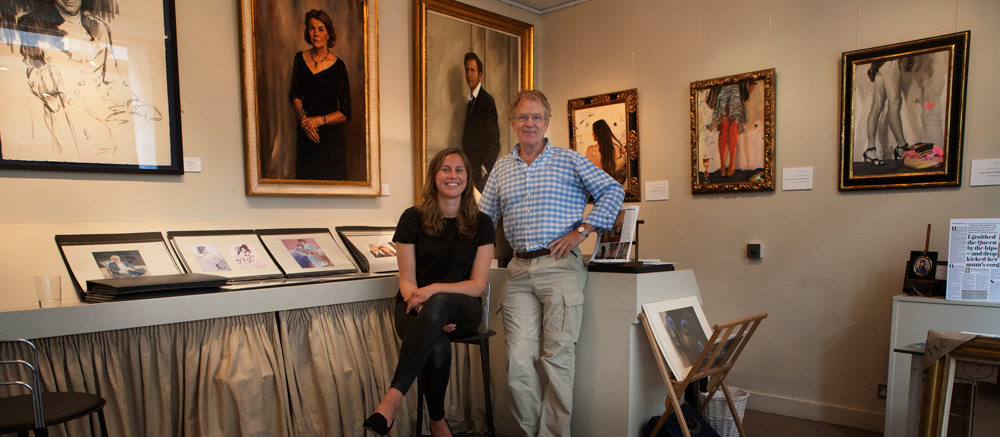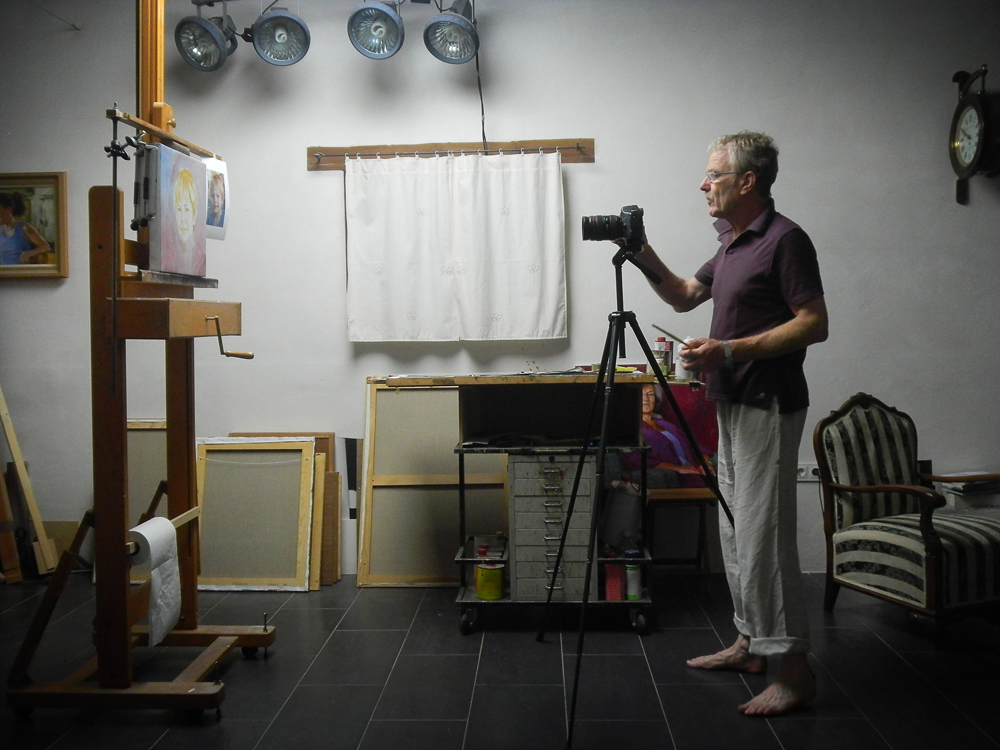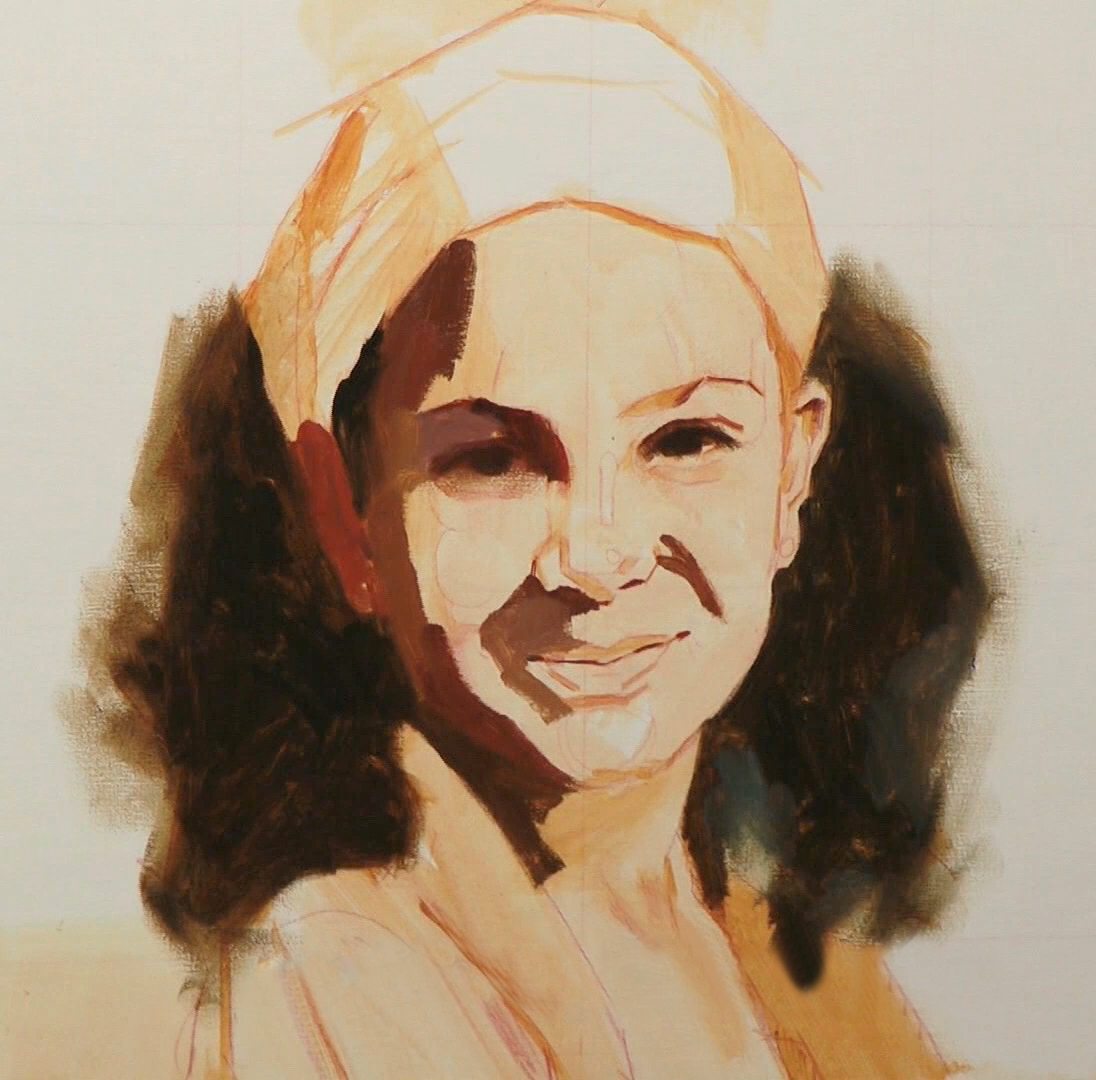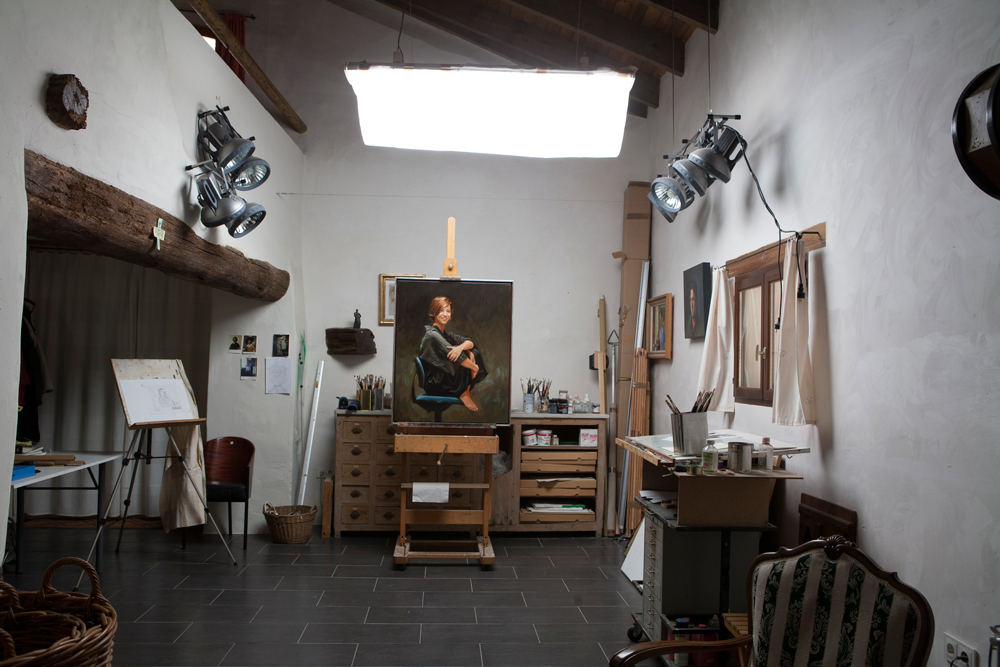I made a 6 step demonstration of one of my latest commissions.
Have fun.
I made a 6 step demonstration of one of my latest commissions.
Have fun.
This weekend I was off to England and not much time was left to write on my blog.
I was out for a portrait commission of a family of two little children with their parents. Saturday and sunday I was the family´s guest. Without preconceived idea I arrived at their home. I knew the mother wanted an outdoor setting. Initially, it was raining so the plans seemed to fall through, but Sunday afternoon the sun came out. The last hour of my visit I had the opportunity to do a good outdoor session. My job for a commission especially with young children is to win the everyone´s trust as quick as possible. Also of those two most sweetest, and very lively children. During the sittings they will have to do what I say. Always that´s a big challenge. And the parents sometimes are stressed if everything will turn out successful. So I did my best to reassure everybody. The photo session turned out well, I have some lovely pictures of a lovely family. Soon I can start making the sketches.

On my return trip I also paid a visit to Fine Art Commissions, my excellent gallery in London.
Now back home and get to work!
Although I use little medium it constitutes a very fundamental part of my painting.
What medium do I use? I always get that question and I’ll explain. It’s important to know that my technique is based on the “allaprima” technique. ‘Allaprima’ means that the painting will be painted ‘wet-into-wet’. With this technique the colours are mixed not only on the palette but also on the painting itself, and the paint can continue to be thinned with the same solvent or medium, or the paint can be used pure. And remember I work in one-day parts so every part must be finished in one single day, before the paint is dry.

◊ Before I start, I rub the canvas with a medium. That can be a normal drying standard medium. Sometimes I use a mixture of 50% alquid medium + 50% stand oil, that gives a more oily appearance. Why do I start this way? I always say “the canvas is hungry and must be fed and satisfied.” In this way the linen sucks less, and the brush strokes are received more easy. I don´t use it too thick, I apply the mixture with a brush and wipe it off with a cloth.
◊ When I start painting I use hardly any medium. My paint is of good composition. I mostly use Rembrandt/ Talens and for me it has the ideal ratio of pigment-oil. Some brands are stiffer and others more liquid.
◊ Once the canvas is covered with paint, and I want to continue adding details, I use the mixture of 50% alquid medium + 50% stand oil.
No portrait painting today! It is harvest time in our kitchen garden, in particular for the tomatoes. Beside ketchup and sauces, Helma makes sun-dried tomatoes. Based on two canvas stretchers that I had to hand I did some tinkering. (remember I wanted to be a carpenter?) With a number of slats, insect-screens, a hinge and four iron angle brackets. Maybe it turned out far too firm. It can stand rough handling, I’d say. When the tomatoes are dried in the sun, after two weeks, we will store them in olive oil. Moreover, that oil comes from the olive groves next to our garden, among others. We wonder how the sun dried tomatoes will taste! See some recipes.
How to become a better painter? That’s an interesting question, and to me perhaps one of the most important ones. You learn more from your losses than your wins.
I was lucky to attend at a very young age the drawing classes of Beatus Nijs. I’ve written about him before. As a painter I am self-taught. Autodidactism has pros and cons. A con might be the slow progress. When I was starting there was no internet yet! I bought dozens of books; good and bad ones. I visited “real” painters, some of them gave useful hints while others were too stingy to share. I saw thousands of paintings in numerous museums and I copied some old masters from time to time. An advantage of self-education however is that you never stop learning! You become, so to speak, your own teacher. You´re on your way to develop a personal method of learning. Through trial and error. I will give you an example. In the past I invented and applied this method: serial recordings.

Sometimes after finishing a portrait, I wondered if a previous stage looked better than the final result. So I started to make every fifteen minutes a snapshot. In hindsight I was able to judge better the whole process. More than once I came to the conclusion that, especially in the final phase, I drove into the ground a lively portrait with good brushwork, by trying to make it “nicer” or more “realistic”. The pitfall of superfluous blending. I tried to avoid that in my next portraits, and so taught myself something.
Recently I came across an image of a painting from the series “Portraits of Valencia “. It is called Man on the Bridge. I made some paintings with this theme probably more than ten years ago. I dedicated more time then to paint subjects other than portraits. Maybe I should resume this and make some uncommissioned work again. The painting was not bad, I guess. I say was, because it no longer exists in this form. One day I wondered if another cut would be better. With strips of paper I covered the picture to get an impression of a new crop. Recklessly I took the rash decision of putting the knife in. I trimmed the canvas! The truncated version hangs now at a friends place. I guess they do not know about the original version. But I regret the error. Why didn´t I see, I was about to commit a big mistake and ruin a good picture? So I warn you all, don´t be too quick with decisions that are irreversible.


 The workshops at Table-Tableau are done and I’m back at work in my studio. On the easel is a portrait of a lady. In September she celebrates her 70th birthday, for which the painting must be delivered. I hope that the client once gives permission to show you some images. So, I’m back behind my easel. The best place to be!
The workshops at Table-Tableau are done and I’m back at work in my studio. On the easel is a portrait of a lady. In September she celebrates her 70th birthday, for which the painting must be delivered. I hope that the client once gives permission to show you some images. So, I’m back behind my easel. The best place to be!

Whilst painting I think of my students of the past weeks. Everyone comes up with specific questions and I try my best to answer. My aim is to provide solid coaching. It is striking that many people are afraid of the shadows. “Is that so important?” You might ask. I believe so. In my long video tutorial I show why. Starting with the light flesh colours often a portrait ends up too light. And it is a difficult job to obtain darker values. Making beginners aware that they are shy of shadows is one of my missions during the workshops.

Mougny, Burgundy, France. Last friday the first week ended and monday new students will arrive. Atmosphere here is always great and I really enjoy being part of it. Table Tableau hosts Bas and Agnes do their outmost to cherish the students. Large part of the success is due to their commitment and perfect organisation. It’s really a privilege teaching here. Regularly people ask me to start workshops in their country. I am very sorry to disappoint them. Untill now I don’ t have plans to teach apart from my courses here. My commissioned work does not allow me to wander so much. Maybe one day…

Time has come again: I have packed my suitcases and tomorrow I am off to Burgundy to start my workshops portrait painting. But as always, before I can leave, there are still dozens of things to be done at the very last moment. This morning, the soil of the kitchen garden had to be plowed so my wife can plant leeks and some corn. That was not possible earlier this month because of the new plants must be placed at waning moon. And that’s now.

In this village, where everyone has a vegetable garden, people live by the rhythm of the lunar cycles and not just for seeding and harvesting; reeds for beanstalks also must be cut according to the lunar calendar. All for an optimum and sustainable yield. Whether it really matters I don´t know. Once I wondered if a portrait painted by waning moon would look better than one done at crescent moon. During my workshops I certainly will not talk about these things. Students might suspect things ain’t cooking in my kitchen and think that they have landed in the wrong workshop.
Once back from France I will continue with my series about the likeness.
3 Check the portrait at twilight.
People always think that the lighting in a painters studio should be abundant. However in some cases, the opposite is true. A few times scarce lighting is very welcome. When I want to check an almost finished portrait I switch off the lights in my studio to see the portrait at semidarkness. Then I notice other differences in hues and values than I’d seen in full lighting.


See also this article on studio lighting.